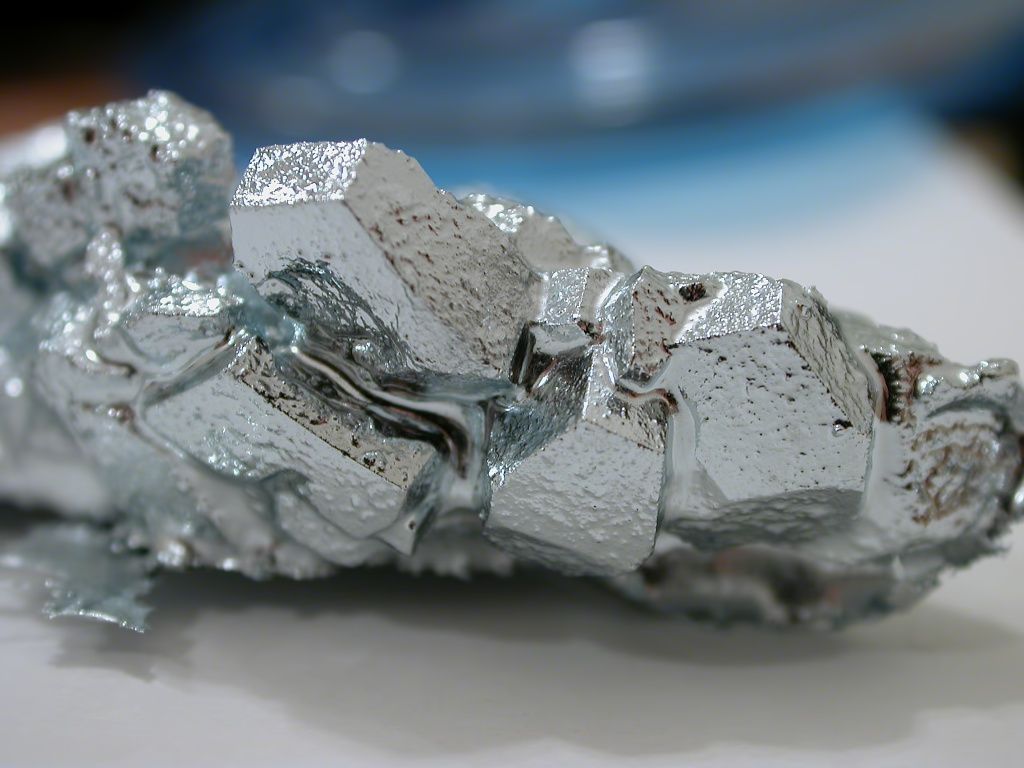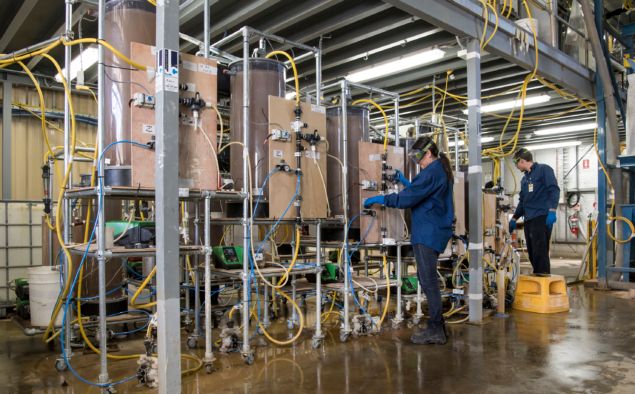Reports on the death of the rare earth element supply chain may well be exaggerated.
This is despite the news that supplies of these raw materials are precarious. As the American Chemical Society warns, “Of the 118 elements that make up everything - from the compounds in a chemist’s arsenal to consumer products on the shelf - 44 will face supply limitations in the coming years.”
Of these 44 endangered elements, nine are rare earth elements (REEs). These are; arsenic, germanium, gold, helium, tellurium, zinc, indium, hafnium, and gallium.
It is certainly true that these trace minerals are very important to modern economies as without them the digital world would grind to a halt. For example, gallium is used in most smartphones, as well as in the lasers that provide facial recognition. It is also used in amplifiers to strengthen the signals sent from mobile phones to base stations, as well as in making LEDs that illuminate homes and provide backlighting to TV and laptop screens.
Hafnium, meanwhile, is used in advanced transistors on integrated circuits, providing a thin, insulating layer. An improvement on silicon dioxide-based insulators which cannot prevent the leak of electrons.
Much of the fear of a shortage lies in the dominance of China in REE extraction and processing. As a study by MIT reports, “In 2011, over 95% of global REE supply originated from China. China also has the largest demand for REEs (with 65% of total global consumption), while the US is the next largest consumer (15%).” Significantly the analysis also reported how, “In 2010, China announced a 40% reduction in the exports of REEs.”
However, it is worth looking at the simpler picture of how REEs are sourced, extracted, and refined, to better understand how raw material suppliers are meeting the challenges of both present and future demand.
This report will examine the case for gallium and hafnium.
Gallium’s Steady Supply Chain
Despite its importance to the digital age, only a relatively tiny amount of gallium is produced each year. In 2018, a global total of just 410 tonnes was used to make LEDs, lasers, and radio-frequency power amplifiers.
Like most REEs, 95% of the global gallium supply is produced in China. However, gallium is a by-product from alumina refining, and China produces only about half of the world’s refined alumina.

A steadily dropping price means that few alumina refiners are willing to expand their plants to encompass gallium processing. While during the 1970s, gallium sold for as much as $3,000 per tonne, prices have been falling ever since due to increased supply. In 2015, the supply of gallium peaked at 470 tonnes resulting in a value of just $300-$400 per tonnes on today’s markets.
Max Frenzel, an expert on REE supplies at Germany’s Helmholtz-Zentrum Dresden-Rossendorf, believes that this low price is not just the result of current supply, but also due to future capacity from alumina refineries. “We are currently at one-fifth to one-twentieth of [the gallium] we could produce,” he explains, “whereas indium production [another REE used in smartphone screens and TVs] is one-third to half.”

As a result, while experts agree that the long-term trend is for increased demand for gallium, Frenzel estimates that it will be at least 40 years before producers will be unable to satisfy the market. Whilst a small rise in prices would allow for further expansion. “For the next fifty years there should not be a problem,” he says.
Hafnium’s Brighter Future
While hafnium is used in the production of mass market electronic goods, its use in the manufacture of silicon integrated circuits accounts for only 4% of global production. Instead, the main consumer of hafnium is the aerospace industry, which uses 60% of supply in making superalloys that can withstand the extremes of high pressure and high temperatures. This make hafnium a vital raw material for producing turbine blades and rocket exhausts in both civil and military sectors. Other uses include plasma cutting tips for welding (15%), nuclear control rods (10%), and catalyst precursors (7%).

While all of these applications are important in their individual ways, like gallium, hafnium is not mined for its own value but as a by-product of a different process, while its demand is also heavily influenced by one single sector. As the journal PhysicsWorld reports, “The primary source for hafnium is zirconium oxide, which in its raw, mined form always contains about 1.8 percent hafnium. For most users of zirconium oxide, a bit of hafnium makes little difference. For the nuclear industry, however, it is essential that the hafnium be removed to produce pure zirconium. Because of this, makers and users of control rods exert a strong influence over hafnium production levels.”
Like many REEs, hafnium production is mainly based in China, although an Australian start-up called Alkane Resources is hoping to break into the market by establishing a hafnium mining and processing facility in New South Wales. The project already has government approval, and if investment can be secured then the company’s technical director, Ian Chalmers, claims that the facility could produce as much as 150 to 200 tonnes of hafnium per year. This would have a major impact on a market that is predicted to total only 100 to 160 tonnes per year by 2025.

Supplies of hafnium, therefore, also look to be secured for several decades. While some media outlets may argue that erratic pricing history is evidence of supply chain instability.
In general, pricing fluctuations should be expected from a sector that produces such small amounts, and where individual players have so much influence over markets. Similarly, Chinese dominance is not necessarily linked to resource location, but current processing abilities for by-products, that can be avoided in the space of a few years if needed.
However, even if sources do run dry, it may not matter. History has shown us how new sources of material are found or replaced when markets adjust to supply shortages.
One clear example of this was when war Zaire during the 1970s disrupted cobalt mining, at the time an essential ingredient for making permanent magnets. The resulting research replaced them with rare-earth magnets.

In turn, if REE supplies do run dry, then alternatives will likely be found. At present, researchers are making daily advances on how nanotechnology can be applied to replace numerous traditional raw materials. Already, silver nanowires and silver nanospheres, as well as polymers, metal meshes, and carbon allotropes are all being explored as alternatives to indium’s use as a conductive oxide.
A point highlighted by Physics World when it reported, “It is therefore hard to imagine a scenario where technology takes a long-term step backward due to shortages of certain elements.”
It is only in the short term that REE consumers need worry. As the MIT report notes, “If nothing is done to either increase supply or reduce demand for REEs, the entire world will face high costs.”
To learn more about the challenges of REE supply, read: A Case Study of Indium: A Vital Rare Earth Element.
Photo credit: CompoundChem, Imagesofelements, Alkane, DIYkits, Techspot, Mining, & Asiannikkeireview